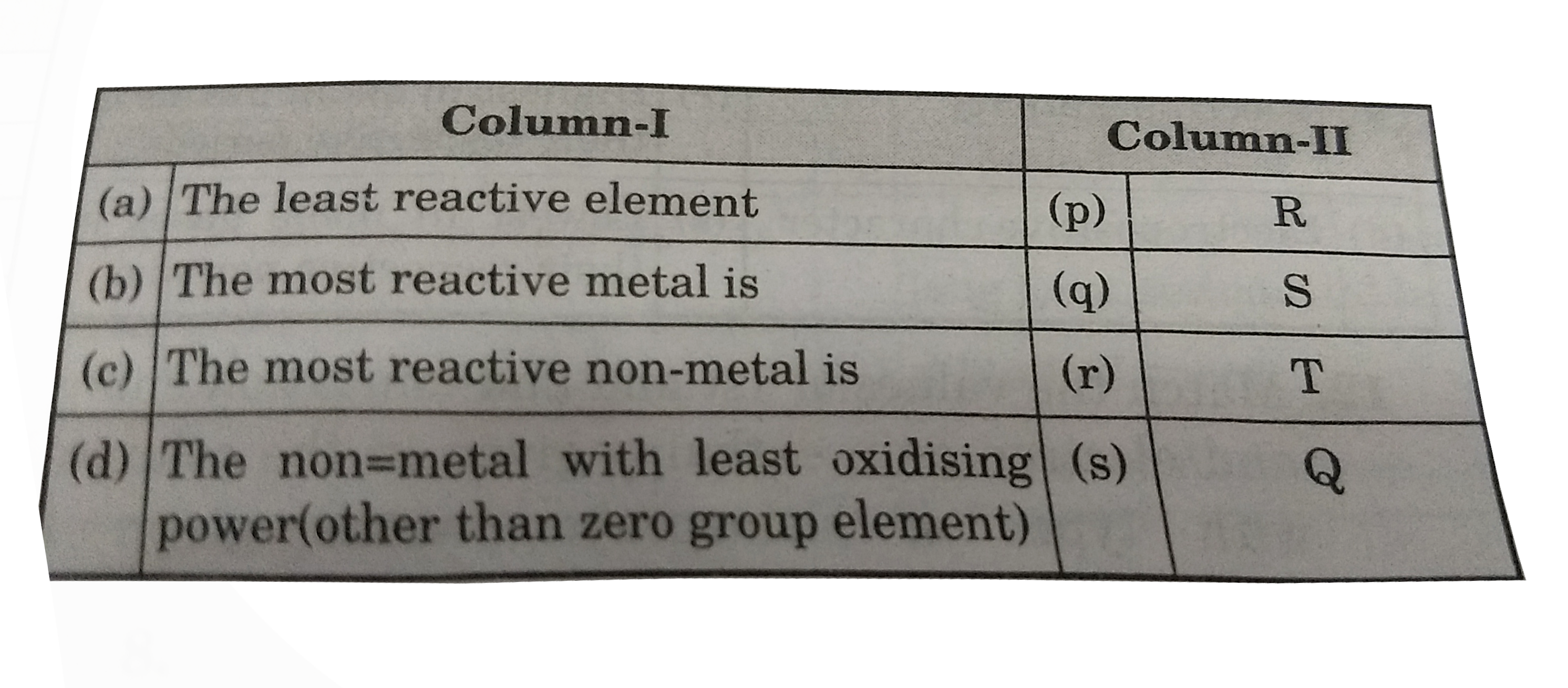The first (ΔH1) and second (ΔH2) ionisation enthalpies (in kJmol−1) and the (ΔHeg) electron gain enthalpy (in kJmol−1) of a elements are given below:

Based on the above information match the following columns.

The correct Answer is:(a-r), (b-s), (c-p), (d-p)
Step by step video, text & image solution for The first (DeltaH_(1)) and second (DeltaH_(2)) ionisation enthalpies (in kJ mol^(-1)) and the (DeltaH_(eg)) electron gain enthalpy (in kJ mol^(-1)) of a elements are given below: Based on the above information match the following columns. by Chemistry experts to help you in doubts & scoring excellent marks in Class 11 exams.
Updated on:21/07/2023Topper's Solved these Questions
- PERIODIC TABLEBook:GRB PUBLICATIONChapter:PERIODIC TABLEExercise:Subjective Type
Explore 32 Videos
- PERIODIC TABLEBook:GRB PUBLICATIONChapter:PERIODIC TABLEExercise:Comprehension 20
Explore 1 Video
- NOMENCLATURE AND CLASSIFICATIONBook:GRB PUBLICATIONChapter:NOMENCLATURE AND CLASSIFICATIONExercise:Subjective Type
Explore 24 Videos
- PRACTICAL ORGANIC CHEMISTRYBook:GRB PUBLICATIONChapter:PRACTICAL ORGANIC CHEMISTRYExercise:Exercise 4 (Matrix match type )
Explore 1 Video
Similar Questions
Knowledge Check
The first (ΔIH1) and second (ΔIH2) ionisation enthalpies (in kJ mol−1) and the (ΔegH) electron gain enthalpy (in kJ mol−1) of a few elements are given below:

The least reactive element is :APBQCRDTThe first (ΔiH1) and second (ΔiH2) ionization enthalpies (in kJ mol−1) and the electron gain enthalpy (ΔegH)(in kJ mol−1) of the elements I, II, III, IV and V are given below

the least reactive non - metal and the most reactive metal of these are respectivelyAIV and VBII and VCV and IIIDV and IIThe second electron gain enthalpies (in kJ mol−1) of oxygen and sulphur respectively are:
A−780,+590B−590,+780C+590,+780D+780,+590
When the first electron gain enthalpy (△egH) of oxygen is −141kJ/mol, its second electron gain enthalpy is :
View SolutionFirst and second electrons gains enthalpies of oxygen and −141and+702kJmol−1 . How is large number of oxides accounted for ?
View SolutionIonisation of energy Fɵ is 320kJmol−1. The electronic gain enthalpy of fluorine would be
View SolutionΔH∘comb of carbon is −xkJmol−1. The standard formation of enthalpy of CO2(g) will be
View SolutionGiven ΔionizHo(HCN)=45.2kJmol−1 and ΔionizHo(CH3COOH)=2.1kJmol−1. Which one of the following facts is ture?
View Solution


